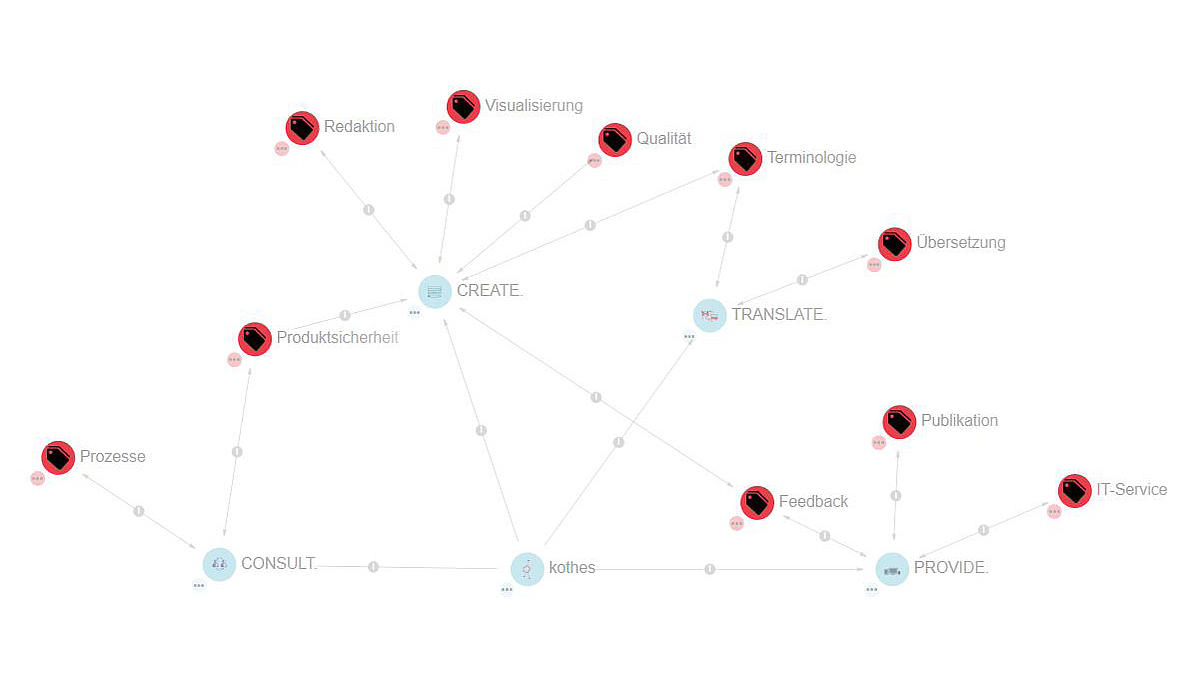In this three-part blog series, we'd like to illustrate the role that knowledge networks – also known as semantic networks – can play in information concepts. In the first part of this blog series we demonstrated why knowledge networks are more suitable for mapping complex knowledge contexts than conventional metadata models. In the second part , we described how use cases can look, specifically for service and user information.
But how do you start to weave or build these knowledge networks? In order to avoid being seduced by the technical possibilities of increasingly complex knowledge networks during detailed work, the goal must first be clarified (we've described here which criteria must be considered for information concepts to fly).
A fisherman chooses the mesh size of his nets in such a way that he spares fish that are too small. In a similar manner, the knowledge nets associated with our information concepts should be meshed only as closely as necessary, in order that users capture the information relevant only to their use cases. This requires careful conceptual work; otherwise too much information and metadata must be both processed and maintained. In doing so, we must not lose sight of the later key figures and, if necessary, the business cases we're aiming for.
Once the framework conditions are clear, three key questions arise:
1. Which metadata do we need for our use cases?
This often involves "old friends" who've already proved their worth in technical communication: product-specific metadata that describes the affiliation of information with specific assemblies and components, as well as metadata that documents the type of information itself. But comparatively new types of information also become relevant. In order to realise the example with the too low oil level from the second part of this blog series, events such as error messages must themselves become nodes in a vast knowledge network.
2. Which metadata do we receive from other sources?
At least in the context of Industry 4.0 and predictive maintenance, the information that users require is derived from various sources. In most cases it's not simply a matter of publishing the data from a component content management system (CCMS) in different output formats. In addition, it's quite difficult in practice to ensure that all systems such as CCMSs, PIMs, spare parts catalogues and many more, have the same metadata model imposed on them. Systems that work in conjunction with knowledge networks can integrate the relevant metadata from other source systems relatively easily. The strengths of different metadata models can therefore be combined.
3. Which relations do we need for our use cases?
So far, only the nodes of our knowledge network have been considered. Now we have to find appropriate connections between these nodes that are relevant for the use cases that we've identified. At first, we think of hierarchical relationships as they arise in other information concepts: the actual component of this could be a relationship. If we think back to the example from the second part, we need a relationship between the information contained in the error report and the information in the troubleshooting corrective action. The error message itself could have a connection being registered to and from a sensor. This, in turn, could have a connection monitored to another component. Here, it quickly becomes complex, so the previously defined use cases are of particular importance.
It's precisely their versatility that inspires knowledge networks to create holistic information concepts. Use cases, which go far beyond the traditional world of user information, become technically tangible or can be prepared through well-thought-out concepts. Claude Monet, Genghis Khan, the production loss at a food production facility or even fishing nets: they all came to serve as examples in our blog series. This diversity is also due to the potential of knowledge networks. In order not to get lost amongst all of the possibilities, it's indispensable to define the use cases within the first steps. But so goes the old adage: Even the longest journey begins with the first step.
Would you like to learn more about how knowledge networks can enrich information concepts? We'd be happy to present to you, without obligation, our pilot project on semantic networks, which we presented at the tekom annual conference, together with our new cooperation partner intelligent views GmbH. You're welcome to contact us anytime.

